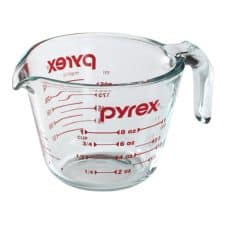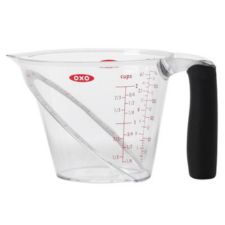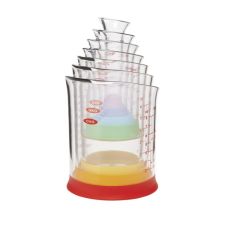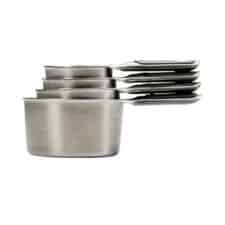Ever wondered how many cups are in a quart? How many pints are in a gallon? Here are my Essential Baking Measurement Conversions to help your favorite baking recipes come out a success, every time.
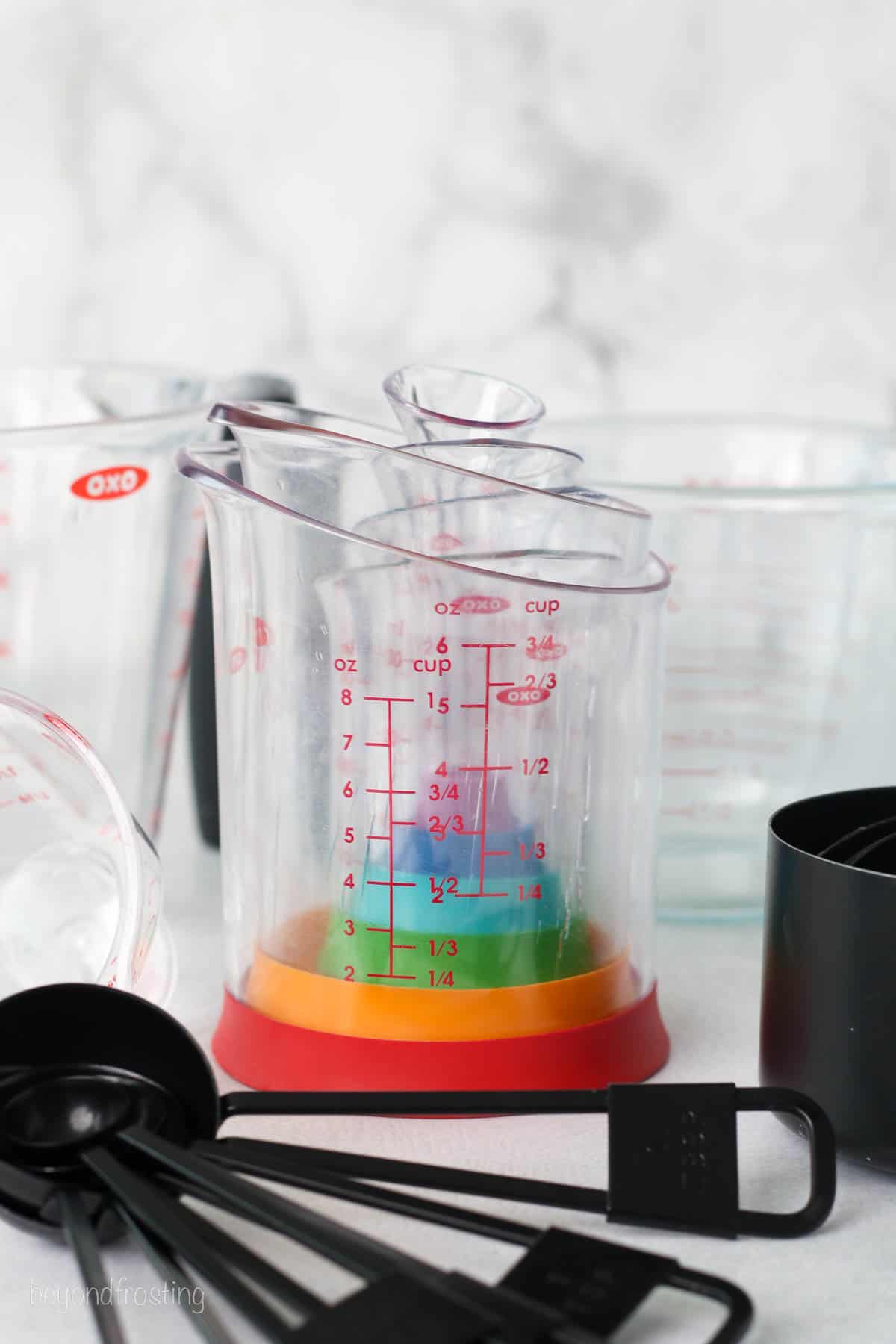
Essential Cup, Quart, and Gallon Conversions for Baking
I don’t know about you, but whenever I’m planning my (almost weekly) bake-athon, I like to have everything I need for success right at my fingertips. Mainly, my kitchen scale.
No one wants to be frantically Googling “how many cups are in a pint?” only after you’ve added what you eyeballed as a half-pint of buttermilk to your cake batter. To help avoid the scenario entirely, I was inspired to put together this easy tutorial on essential baking measurement conversions that I use on the regular.
If you’ve struggled to know how many cups are in a quart, pint, or gallon, I’m sharing these and other common kitchen conversions in my handy guide below. You’ll be a conversion wizard in no time, and your baking will be all the better for it.
Why Is Accurate Measuring Important in Baking?
If you’ve ever wondered why your baking recipes don’t seem to come out just right, you’re definitely not alone. There could be a host of reasons why, but the main culprits I’ve seen? Not following the recipe, and not measuring ingredients correctly.
So what’s the big deal with baking measurements? And why is it so important to get measurement conversions right? Let’s discuss:
- Cooking is an art, and baking is a science. Like in any chemical reaction, precision is just as important in baking! Having just one measurement off can change the chemical outcome of a whole recipe. Too much baking powder? Your cakes with rise quickly, and deflate afterward. Not enough flour? Your cookies will spread. You want your measurements, and any conversions, to be as accurate as possible.
- It makes it easier to scale recipes up and down. If you’re shopping for ingredients, conversions allow you to easily cross-reference the amounts in a recipe with the amounts you see on labels. Doing quick conversions makes it easier to buy the right amounts, and scale a recipe up or down as needed.
Things to Remember
Before we get into some common baking measurement conversions, here are some more key points to keep in mind:
- The British Imperial System is the current system of measurement in the US. This dates back to when the US was first established and uses ounces, quarts, and gallons for measuring volume.
- Many other countries use the Metric System, which works in milliliters and liters. For example, how many quarts are in a liter? Technically, there are 1.057 quarts in one liter. This is one of the only times where I round it off to 1 quart = 1 liter since the conversion is so close!
- Liquid measurements are not the same as weight measurements. For example, a fluid ounce is not the same as an ounce by weight, and vice versa. See further on in this post for more details.
Must-Have Kitchen Conversions
Below you’ll find helpful baking conversions for quarts, cups, pints, and gallons. Keep these handy, and don’t forget to scroll for more baking tips below!
Quarts
How many cups are in a quart?
There are 4 cups in a quart.
How many quarts in a gallon?
There are 4 quarts in a gallon (a quick way to remember is that quart is literally a “quarter” of a gallon, thus the name).
How Many Ounces in a Quart?
One quart is 32 ounces.
How many cups are in 4 quarts?
There are 16 cups in 4 quarts.
Cups
How many ounces are in a cup?
There are 8 ounces in one cup.
How many cups are in a pint?
There are 2 cups in a US pint.
How many cups are in a quart?
There are 4 cups in a quart.
How many cups are in a gallon?
One gallon is 16 cups.
How many tablespoons are in a cup?
There are 16 tablespoons in one cup.
How many tablespoons are in a ¼ cup?
There are 4 tablespoons in a quarter cup.
How many cups is 8oz?
One cup is equal to 8 ounces.
How many cups is in 16 oz?
16 ounces is equal to 2 cups.
Pints
How many pints are in a gallon?
There are 8 pints in one gallon.
How many oz to a pint?
There are 16 ounces in a pint.
How many liters is a pint?
There are 0.47 liters in one pint.
Half Gallon
How many ounces in a half-gallon?
There are 64 ounces in a half gallon.
How many cups are in a half-gallon?
There are 8 cups in a half-gallon.
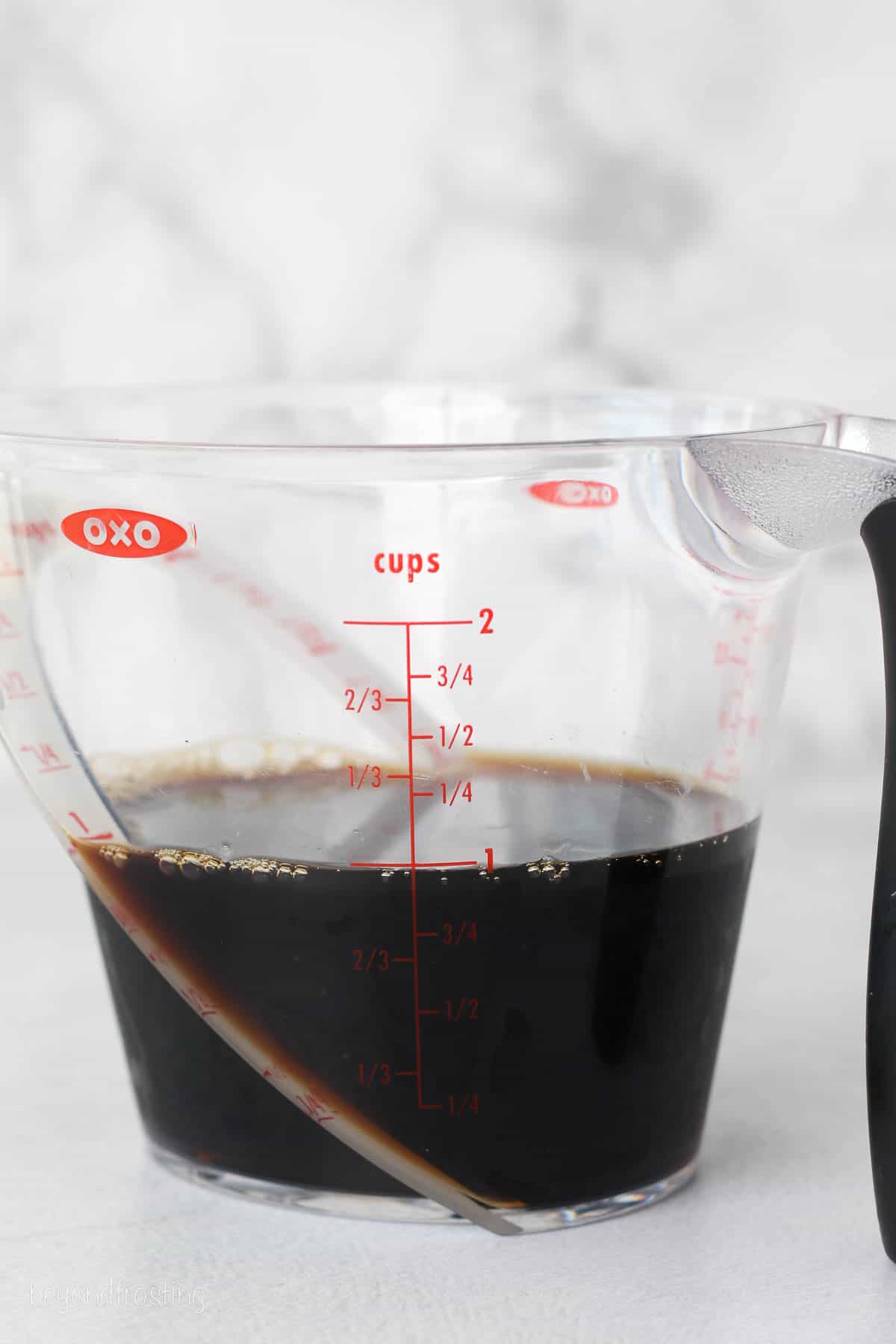
Dry Measurements vs. Wet Measurements
There is a difference between a dry measurement and a wet measurement in baking. We’ll use quarts as an example: While a liquid quart is only 0.95 liters, one dry quart is actually equal to 1.1 liters.
It’s important to remember that the conversions above are based on liquids and not dry ingredients. Make sure you’re using appropriate measuring tools that are made for measuring liquids!
The good news is that the measurements for pints and cups are the same, no matter if they’re wet or dry. Below is a quick overview of wet and dry ingredient conversions:
Wet Measurement Conversions
Wet measuring tools are often graduated with volume marks, for measuring liquids (think of your average graduated measuring cup with a spout). We use these types of tools for ingredients like milk, oil, water, and other liquids. Here are some wet ingredient conversions:
- 1/2 ounce = 1 tablespoon
- 2 ounces = 1/4 cup
- 8 ounces = 1 cup
- 16 ounces = 1 pint
- 1 pint = 2 cups
- 1 quart = 2 pints
- 1 gallon = 4 quarts
Dry Measurement Conversions
Dry ingredient measuring tools are made to be filled and then leveled. Picture your typical baker’s measuring cup and spoon set. These tools are best for ingredients like flour, sugar, etc.
- 3 teaspoons = 1 tablespoon
- 1/8 cup = 2 tablespoons
- 1/4 cup = 4 tablespoons
- 1/3 cup = 5 tablespoons + 1 teaspoon
- 3/4 cup = 12 tablespoons
- 1 cup = 16 tablespoons
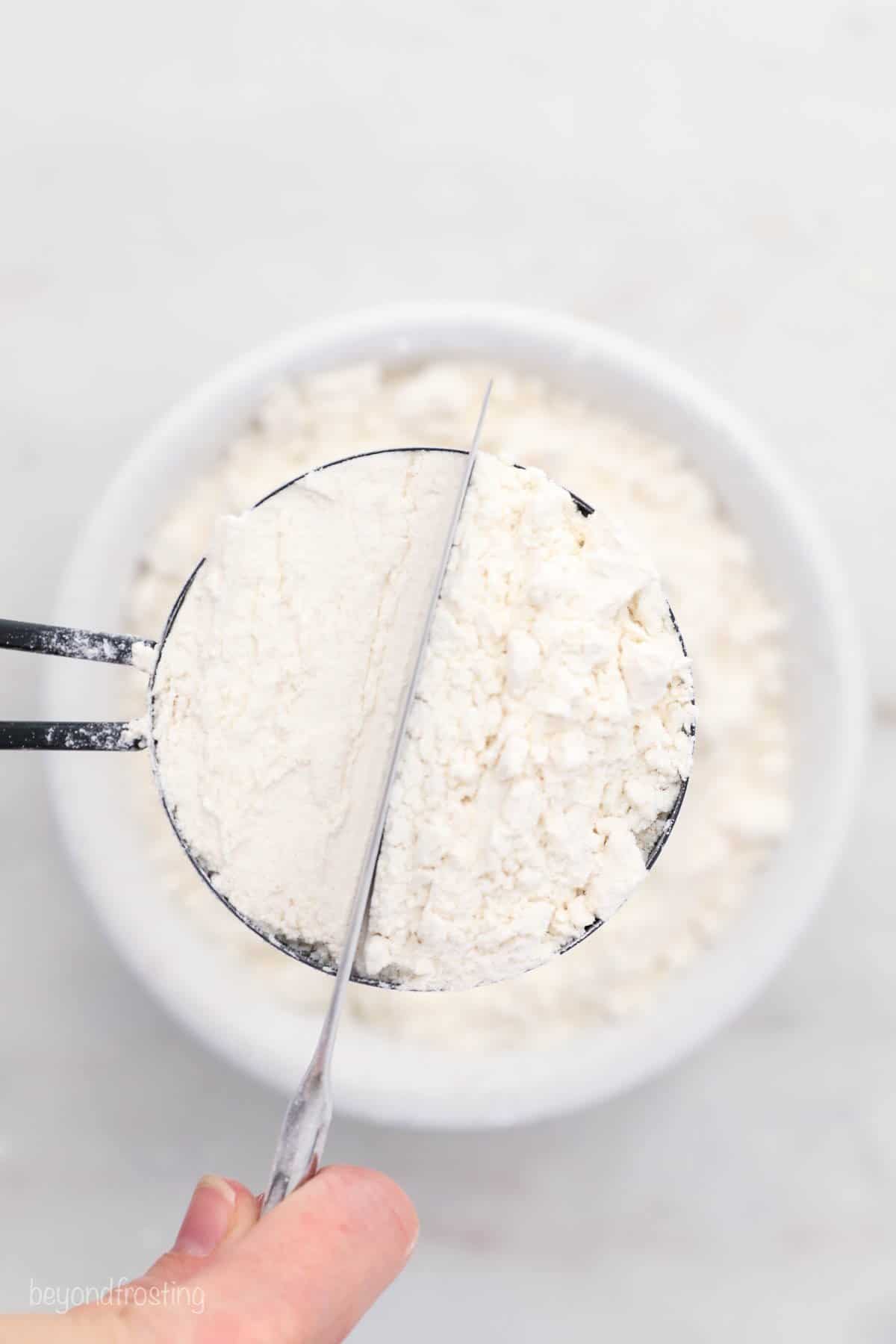
Baking Measurement Conversion Chart
Use these Essential Baking Measurement Conversions for baking success! I reference this chart every day in my kitchen, especially when I measure my dry ingredients. If you’d like, here’s a printable version as well.
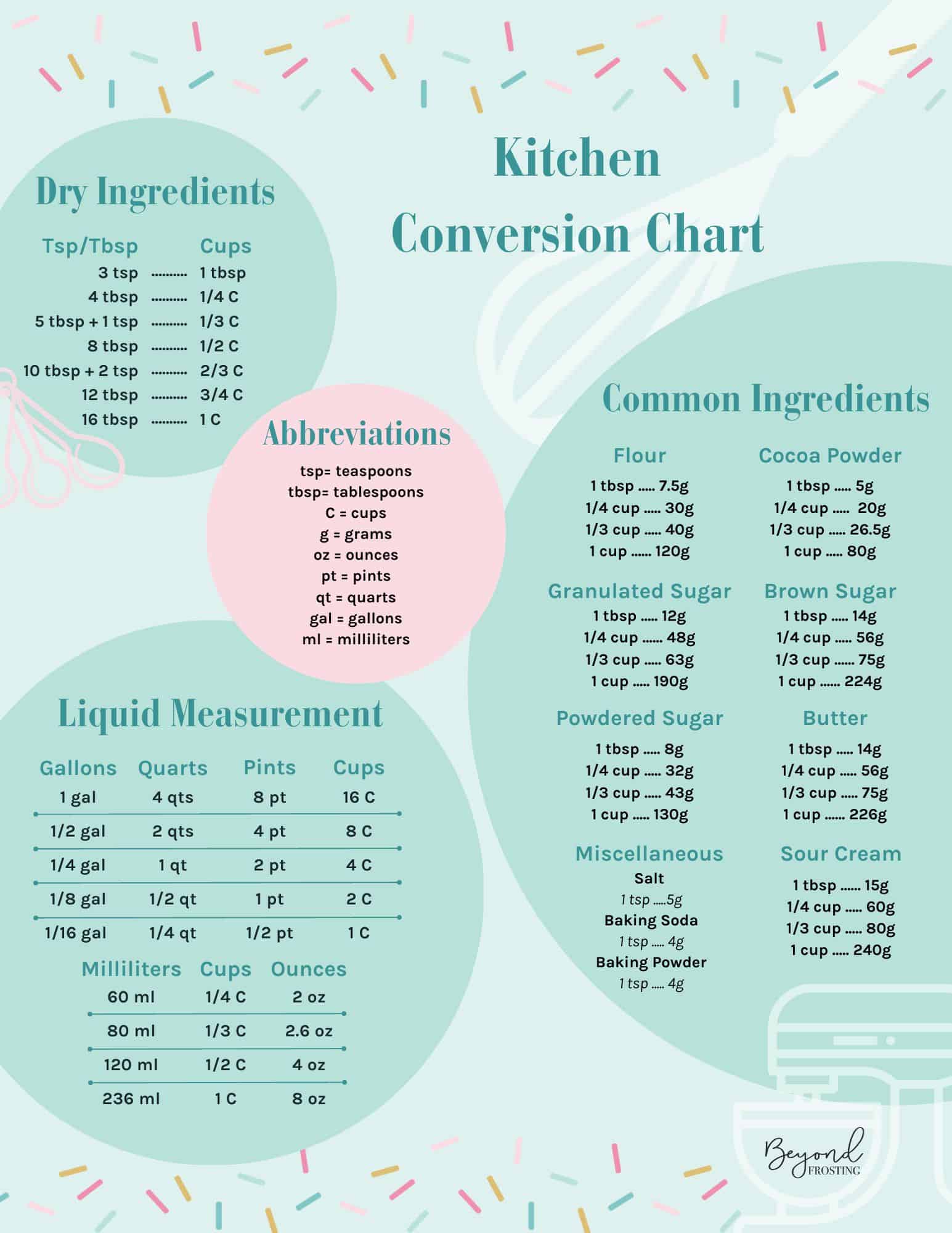
Download My Handy Converison Chart
More Helpful Baking Tips
Now that you’re armed with essential baking measurement conversions, here are some bonus tips to keep in mind when baking:
- A “pinch” and a “dash” are actual amounts! If you’ve ever seen a baking recipe that refers to a “pinch” or a “dash” of something, you don’t have to wing it. A dash is technically 1/16 of a teaspoon, while a pinch is 1/8 of a teaspoon.
- Always follow the recipe. As baking bloggers, we go through the grunt work of testing and revising, so you don’t have to. For best results, always follow a recipe and measurements as they’re written, and be precise!
- Measure the ingredients correctly. If your recipe has turned out too dry, too moist, has risen too much, or has fallen flat, chances are good that something, somewhere, was measured incorrectly. Use a kitchen scale if you have one. Otherwise, your next best bet is the “spoon and level” method, where you spoon ingredients like flour into your measuring cup and then level it off with the back of a knife. I go into more detail in my tutorial on How to Measure Flour.
- Set yourself up for success. Knowing your conversions, and/or having them on hand, is the best way to ensure your recipes come out perfect every time!
Every kitchen needs glass measuring cups, especially for hot liquid. This classic Pryex 1 cup measuring cup for has non-poroous glass, and is pre-heated oven, microwave, fridge and freezer safe, & dishwasher safe.
This handy Mini Angled Measuring Cup measures up to 2oz of liquid ingredients. The angled cup allows you to see the measurements from above as you’re pouring.
This OXO 2-Cup Angled Measuring Cup is another kitchen staple for measuring liquid ingredients. The handy angle edges allows you to see the measurement from above as you’re pouring.
These handy liquid measuring cups are a kitchen staple. The 7pc set includes 1-tsp, 1-tbsp, 1-oz, 2-oz, 1/2-cup, 2/3-cup and 1-cup beakers.
The set of four measuring cups have soft, comfortable, non-slip handles. The set includes 1/4 Cup, 1/3 Cup, 1/2 Cup, and 1 Cup Measuring Cups for dry ingredients.
This handy kitchen scale is my more used baking tool, and it’s inexpensive too! The digital scale is lightweight and takes up minimal space.
Easy Baking Recipes to Try
Ready to put your measuring skills into action? Here are some easy baking ideas:

